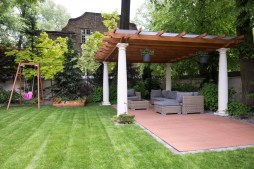Step-by-Step Instructions on How to Compost at Home Successfully

Composting is a great way to reduce waste and create nutrient-rich soil for your plants. Whether you have a large backyard or a small balcony, composting at home is an easy and rewarding process. In this article, we will provide you with step-by-step instructions on how to compost at home successfully.
Getting Started with Composting
Before you start composting, it’s essential to gather the necessary materials. You will need a compost bin or container, organic waste, such as fruit and vegetable scraps, coffee grounds, and yard trimmings. It’s important to avoid adding meat, dairy products, and oily food waste as they can attract pests.
Once you have gathered your materials, choose a suitable location for your compost bin. It should be easily accessible but not too close to your living space to prevent any potential odors. Placing it in a sunny spot can help speed up the decomposition process.
Building Your Compost Pile
To start building your compost pile, begin by layering your organic waste materials. Alternate between green materials like fruit and vegetable scraps or grass clippings and brown materials like dried leaves or shredded newspaper. This balance of nitrogen-rich (green) and carbon-rich (brown) materials helps create an optimal environment for decomposition.
It’s essential to keep your compost pile moist but not overly wet. If the pile becomes too dry, add some water to maintain moisture levels. Additionally, periodically turning or mixing the pile will help aerate it and speed up the decomposition process.
Maintaining Your Compost Pile
Maintaining your compost pile is crucial for successful composting. Regularly adding new organic waste will keep the decomposition process going. Chop larger pieces of waste into smaller bits to accelerate breakdown.
Monitoring the temperature of your compost pile is also important. The ideal temperature range for decomposition is between 120°F to 160°F (49°C to 71°C). Use a compost thermometer to check the temperature regularly. If the pile becomes too hot, turn it more frequently or add more brown materials to cool it down. If it’s too cold, consider adding more green materials.
Harvesting and Using Your Compost
After a few months, your compost will transform into dark, crumbly soil-like material. This indicates that the decomposition process is complete and your compost is ready for use. To harvest your compost, remove any undecomposed materials or large pieces and set them aside to be added back to your pile later.
You can use your finished compost in various ways. Mix it into your garden soil to improve its structure and fertility. It can also be used as a top dressing for existing plants or as a potting mix for indoor plants. Compost provides essential nutrients and beneficial microorganisms that help plants thrive.
In conclusion, composting at home is an excellent way to reduce waste while creating nutrient-rich soil for your plants. By following these step-by-step instructions, you can successfully start and maintain a compost pile in your own backyard or even on a small balcony. Get started today and enjoy the benefits of homemade compost in no time.
This text was generated using a large language model, and select text has been reviewed and moderated for purposes such as readability.





